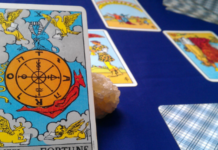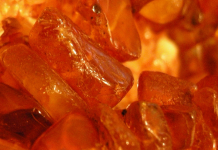
It’s summer time, and for many families that means the young ones will be home. They may not be up for any enrichment camps, but you can stave off the boredom with a few witchy summer activities. Here are a few summer activities to help keep them occupied, and grow their spirit.
The foundation for a strong spiritual practice is a connection with the world and awareness with ourselves. As we grow older, we start to place barriers — people who begin following their path in adulthood often have to spend some time learning to be centred within themselves, and how to connect with the greater world. However, children generally come with those abilities, and it only needs to be fostered.
These activities are a fun and easy way to help children explore and learn about their magical self in a low-pressure and self-guided way.
Not everyone is able to stay home all day during the summer with their children, so these activities can be squeezed into the hours before and after summer camp. They can be adapted to fit into a number of belief systems and enjoyed by a variety of age groups. From little hands to cynical teenagers, there’s something here for everyone.
 Build a temporary outside altar
Build a temporary outside altar
With the warm weather, we want to be outside but sometimes we need a bit of encouragement to leave our climate-controlled environments. Building an outside altar is a great way to show a number of spiritual ideals in practice. Planning and constructing an outside altar that is meant to come down deals with the impermanent nature of all living things as well as a respect and honour for the natural world.
This can be as structured or casual as you want it to be. You can take time with your child (or if they are old enough, have them work on their own) to plan out a full structure, as well as what they want it to represent, before you start or you can just let them wander around gathering materials they think they might use.
There are no rules or guidelines to this activity. It can be a small table saved from the garbage that has been cleaned off and decorated with natural things. It can be made directly on the ground with stones and sticks. The bulk of what is on the altar should come from the natural world. If your child would like representations of figures, encourage them to create them from things they can find outside.
For people who live in urban environments this may be a little tricky, since you can’t just go in your backyard and find things. In that case, you may need to plan a trip to the park or out into the country to find what you need. That being said, there’s nature all around us, at all times. Take a walk to see what you can find before deciding it’s a bust. If you don’t have access to an outside place because you live in an apartment, find a nice spot in the home and set up this altar in a tray. Although this is meant to be done outdoors, that is not possible for everyone.
If your family follows a particular belief system that incorporates the natural world or has deities and spirits who must be honoured in nature, this is a perfect way to introduce them to your child, or build more understanding around them.
Even though the altar is temporary, it should stand for a period of time — how long is up to your family. You can keep it up for a moon cycle, or until a certain feast day, or you can have it up for as little as a week. However long it is up, you child should be encouraged to interact with the altar, make changes, add things or take them away. In fact, if they are constantly perfecting their altar until it’s time for it to come down, that’s fine too!
This activity can be used to teach a specific lesson, but it is also a good way to help children understand the work inherent in honouring or worshipping. Children should be encouraged to spend time with, and care for, this altar as an active part of their lives. Although that altar will eventually be deconstructed (and most pieces returned to nature), the skills they learn in caring for this altar can be carried on to helping ancestor or deity altars later in life.
Related: For more ideas, see “Creating your altar: A beginner’s guide,” and “Portable shrines: You can take it with you.”
 Introduce crystals by making jewellery
Introduce crystals by making jewellery
The use of crystals and stones is an easy way to get someone in touch with their own energy. They’re used in a variety of healing and meditation practices. In addition they look great and come in a wide variety of types, colours, and textures making them ideal subjects for children.1
Many children begin collecting pretty and interesting rocks from around their yard. In certain parts of North America, many of these plain rocks are actually quartz! This activity however calls for a bit more than just piling crystals in a box.
There are two versions of this craft here. For older children, they will need malleable wire they can bend (20 gauge is a good size for beginners), and jewellery pliers. Younger children will need a small jewellery vial that can be worn on a necklace, which can be opened and closed.
Each type of stone has its own set of properties and uses. Some are for healing, others for grounding. There are ones that amplify psychic abilities and others that help with emotions. The first step in this craft is to work with your child to identify what type of stone they would like to use and why. You can look in a metaphysical shop, or online, for the type of stone you want.
If you have an older child that can handle wire wrapping, then this stone should have edges as opposed to smooth and round, to make the process easier. If you have a younger child (or your kid just doesn’t want to wire wrap), then you will need to purchase smaller stones, perhaps even chips, that can be put inside of the vial. Both of these options can be found online, usually for low prices.
Once you have your stones, you can start to assemble your piece. For younger children, simply help them put the stones into the jar, speaking to them about what the stones feel like, and how they hope the stones will help them. When the jar is filled, seal it up tight and tie it to a piece of cording for them.
For older children, they will need their wire and their stone.
The first step is to create a little basket to hold your stone. Hold the wire against your stone and begin wrapping it in a swirl pattern going downwards so that it creates a little holder. No more than three of four times.
Still holding the stone, bend it so it faces back toward the top, give some space and then begin wrapping the top as you did the bottom. After they are done, create a loop at the top for a chain or a piece of cord. Once your child is more confident, they can learn how to make all types of designs with the wire.
Related: For more information, see “Crystals: How to buy your first one,” and the course Crystal Grid Fundamentals.
 Test out some divination in nature
Test out some divination in nature
Many cultures use the natural movements of animals, the weather, or even plants. Just because we don’t depend on the movement of herds, or the natural growing seasons to live our lives does not mean we can’t all find wisdom in the natural world.
For this activity, grab a notebook or even your smartphone and go outside. Take a walk around your neighbourhood or, if you can, go out to hiking trails and the like. Spend some time just taking note of what you notice.
What are the animals and birds doing? Do you hear anything? How is the weather? Even if you just spot a pretty patch of flowers, take note of where it is. Grab a photo to identify it. Pick up feathers in your path. Note if you see twigs and sticks forming designs.
Talk to your child while you do this, see what they think, how different things make them feel. When you get home, look up some of the different things you saw. Shapes, animals, and even colours. Find out what they mean and let your child decide what message the universe was sending.
It’s important to remember that divination doesn’t just mean a look into the future. It can be a look into the self or just something that you need to be aware of in your personal life. Don’t worry about telling the future, encourage your child to be present.
Related: For older children, you may want to introduce them to the idea of keeping a magical journal. A great resources is “Why you should keep a magical journal.”
 Sleep late and keep a dream journal
Sleep late and keep a dream journal
During the school year, keeping a dream journal might be a bit tough since getting out the door to make it to class on time is top priority. During the summer, there’s often a bit more time, even if you have to make it to summer camp, to take stock of what you dreamed about.
This is very simple and private. Your child can use a notebook or a blank sketchbook, and simply record their dreams. If they aren’t really writing yet, it’s enough to draw pictures. This helps them become used to staying connected to that part of their mind that generates dreams. Some people believe that working with our dreams helps to develop psychic abilities and perceptions, others think that spirits and energy try to communicate in this manner.
Your child may not want to share their dreams with you, and that’s ok.
You can help by giving them resources that help with dream symbols such as the Dream Moods Dream Dictionary.2 However, these sources often have some adult content as part of their dictionary, so if you’re concerned about such a thing, it’s best to look around for a more suitable source.
This is a practice that can carry past the summer, but don’t force it.
Related: You might want to check out Scott Cunningham’s Dreaming the Divine for more ideas, and read Donyae Coles’ review of the book.
 More summer activities for magical children
More summer activities for magical children
These projects and activities are just the tip of the iceberg when it comes to working spirituality into your children’s summer. I’ve given some suggestions for very specific things but you can practice magick with your child in many, non-project based, ways.
- Use colour correspondence when helping them choose clothing. Want to feel brave? Put on a red shirt. Want a more chill day? Go with the blue shorts.
- Bring them into the kitchen to help with some magical cooking with herbs and spices, or have them participate in a spiritual cleaning of the house during chore time.
- Use air-drying clay to make idols and figures for home altars.
- Bundle dried flowers together to make sweet-smelling sachets for the home to promote peace and harmony.
There are a million activities from the very mundane to the exciting that can be turned into magical learning experiences to expand your child’s horizons. Happy summer!
Image credit: The_Medieval_Mouse, lunasam, Russ Thompson, Anna & Michal, and Simply_Happy
- For more information on getting started with crystals, check out my article, “Crystals: How to buy your first one.” [↩]
- Dreammoods.Com, “Dream Moods A-Z Dream Dictionary,” 2000. [↩]








